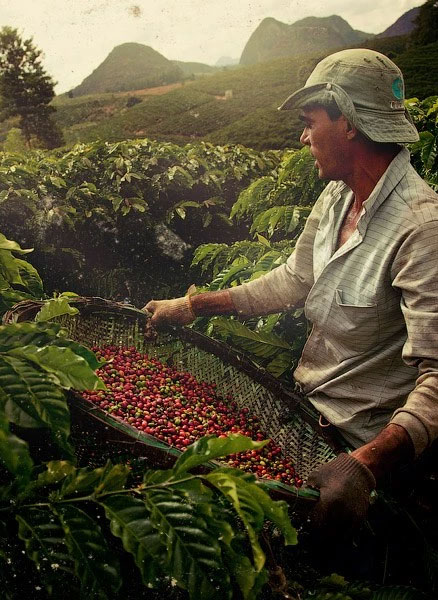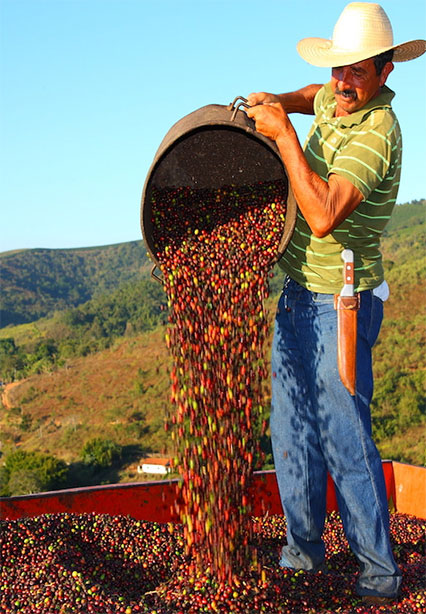Latin America: The Cradle of Coffee!

When it comes to coffee, our minds are almost immediately directed to South America - and rightly so, since this continent is responsible for a very large portion of world coffee production.
We look for the history of Latin American coffee, trace its taste and know the world of coffee even better - which, without South American coffee, would be much, much poorer.
 Coffee arrives in Latin America: the last days of colonialism
Coffee arrives in Latin America: the last days of colonialism
The coffee was introduced to South America in an attempt by colonists to exploit the fertile, tropical lands of their overseas cities, following Asia's successful experiment. The first American soil to be tested on coffee trees was the Caribbean Islands, but soon afterwards the cultivation passed to the mainland, originating in Brazil, from where it was spread to many Latin American countries.
The first South American coffee plantations were large-scale, slave-based, and large tracts of rainforest were deforested. The pure, virgin soil of the rainforest proved to be particularly fertile and the climatic conditions particularly suitable for coffee growing. Slowly, with the proliferation of coffee trees, the end of colonialism and the abolition of slavery, smallholdings were created alongside the huge plantations, and precisely because of the introduction of coffee trees, many different varieties of coffee and hybrids flourished in the area, which still exist today. a particularly pluralistic effect on South American coffee.
Brazi is the largest coffee producer in the world, holds and Colombia is third in the world rankings. Beyond that, coffee has flourished in many small and large Central and South American countries, such as Honduras, Mexico, Guatemala, Peru, Nicaragua, Costa Rica, El Salvador, Ecuador, Panama, Bolivia, but also in Caribbean islands such as Jamaica, Haiti, Cuba and Trinidad.
Latin America will remain dominant for years in coffee lovers minds as the cradle of coffee, whether or not the coffee tree originates in Africa, spread by the Arabs, and was first cultivated in Asia. The marketing of most coffee companies has for years been based on representations of Latin America (parrots, sombrero, tropical trees, dancers, harbors) that can now be considered stereotypical.
 How does Latin America coffee taste like?
How does Latin America coffee taste like?
Latin American coffee trees extend over a large area, always within the confines of the "coffee belt", so it is expected that they will have very pronounced fluctuations in taste. Coffee tasters find further differences between Central and South American coffees, while Brazilian coffee, due to its high production and many varieties, could be considered a separate category in itself. Still, some of the world's finest coffees, such as Jamaica Blue Mountain, are produced in Latin America and the Caribbean.
In general, American coffees are characterized by balance. The acidity is present, but without fluctuations, and the body is also satisfactory. The aromatic bouquet offers a wide range of flavors, reminiscent of ripe fruit, chocolate, cocoa or honey. In general, they exhibit a greater sweetness than Asian or African coffees, although this varies greatly between the beans from Central and South America. Their aftertaste, after all, is intense, and their taste is "pure".
South America produces both Arabica and Robusta, however the flavor profile described is of course Arabica. There is a lot of variation in Latin American Robusta, as besides the commercial Robusta for stigma coffee there are really thoughtful and quality choices that deserve our attention.
How can we enjoy a South American coffee?
South American coffee is everywhere - after all, Brazil is responsible for one-third of world coffee production. Due to its balanced taste, Latin American coffee is the preferred base for many coffee blends, as it gives consistent results to the taste of most coffee lovers.
Due to its balanced taste, South and Central American coffees give very good results in any extraction we try. So we can equally enjoy a good Latin American blend either in espresso or filter extract, while these coffees usually withstand mixing with milk or sugar, though not always necessary.
Three Latin America Coffees worth to try
Lavazza Tierra: One of Lavazza's favorite blends of the Italian espresso colossus - based on its flavor from Brazil, Colombia and Peru coffee beans - a true Latin American flavor. The chocolate notes are dominant, the body intense and the aroma strong, while the espresso that gives this blend is exceptional.
Puro Organic: Fair trade organic coffee from Honduras and Peru, with a delicate aroma, light fruity feel, natural sweetness and a chocolate aftertaste. Ideal for espresso, it can give a beautiful effect on filter extraction as well as being an ideal blend for an introduction to South American coffee flavors.
Illy Monarabica Guatemala: From Illy's single origin collection, Monoarabica Guateamala stands out for its caramel and honey aromas and the fruity feel it leaves in the mouth. Ideal for an enjoyable espresso beyond just the usual, Monoarabica Guatemala is perfect for anyone who wants to start his wanderings in the single origin coffee world, with its intense and clear organoleptic characteristics.
It's almost certain that every cup of espresso we enjoy has a few beans inside us traveling from South America for our sake - it's a long, tiring journey to not appreciate it and not enjoy it as much as it deserves. Enjoy!










